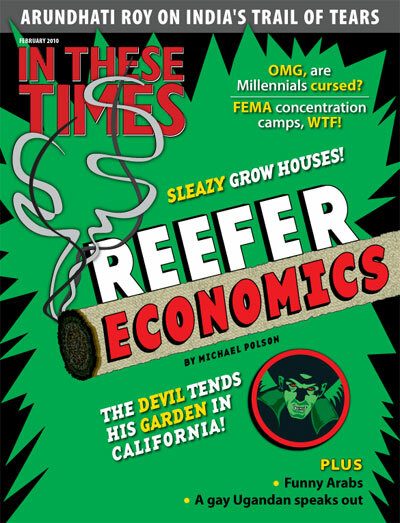
There’s a useful old carpenter’s adage – measure twice, cut once – that’s also pretty good advice for other projects, like crafting public policy. Knowing as precisely as possible how a society is ticking helps both to better understand problems and formulate solutions.
Compared to woodworking, it’s harder to measure what is going on in a society – or even to know what to measure. And relying on the wrong measurements can mess up public policy, tilting decisions politically and ignoring a society’s shortcomings.
The big emerging debate focuses on the single most influential economic statistic – the gross domestic product, or GDP, which is the market value of all the goods and services produced in a country over a year, including private household consumption, investment, government spending and exports (minus imports).
The rise and fall of a nation’s GDP is often taken as a measure of national well-being, even though it was not designed for that purpose by economist Simon Kuznets; he developed it during the 1930s Depression as a way of charting overall economic activity. It was a great breakthrough for economic planners and rapidly became the premier marker of how a country’s economy was faring.
Lies, damned lies, and statistics
Almost from the beginning, many economists, including Kuznets, noted weaknesses in using the GDP to indicate the nation’s well-being. But the current economic crisis has given new urgency to a wide range of criticisms raised in recent years.
As the Organization for Economic Cooperation and Development (OECD) Secretary-General Angel Gurria told a world forum on statistics in late October:
A major challenge we experience today is the gap between what official statistics say about economic performance, and people’s perception of their own living conditions… GDP was growing [before the crisis] but most people did not necessarily feel better-off. Now, the problem is even more critical.
Last fall, for example, pundits happily declared the recession was over when the Commerce Department reported that the GDP grew during the third quarter of 2009 at a 3.5 percent annual rate (it later revised the number down to 2.2 percent). At the same time, unemployment was climbing to more than 10 percent, and consumer confidence was slipping.
Before the crash, GDP reports were just as out of sync with people’s experiences. GDP rose throughout the Bush era, but people were largely unhappy with the economy. Most people’s real incomes weren’t growing, just those of the rich. It became clear that much of the GDP boom was an illusion. It was composed of a bubble of housing assets and funny-money financial derivatives. And since current growth is creating a climate crisis, it is also environmentally unsustainable.
One of the key problems with GDP as a measure of national welfare is that it treats “bad goods (and services)” the same as “good goods.” If it costs $100 million to clean up a toxic waste dump but only $1 million to avoid it, the clean-up directly contributes 100 times as much to the GDP as the prevention, making the country “wealthier.”
In other words, waste and inefficiency can make GDP bigger but leave people worse off. For example, healthcare expenditures rose rapidly in recent years, but overall care and health outcomes did not keep pace. A single-payer system could have provided better health at lower cost, but the GDP would have been smaller in the short term.
Also, the GDP does not distinguish between the long-term significance of different types of economic activity. (That fact didn’t bother Michael J. Boskin, chairman of President George H. W. Bush’s Council of Economic Advisers, who said that “it doesn’t make any difference whether a country makes potato chips or computer chips.”) Likewise, the GDP does not recognize the loss of value when a dead-end job replaces one with more meaning. And it does not distinguish between egalitarian societies and those, like the United States, where the rich have recently captured most of the GDP growth.
Such critiques have spurred a search for a single number that can compete with the GDP as an indicator of how a society is doing, like the United Nation’s Human Development Index (which incorporates life expectancy and education with economic output) or Bhutan’s Buddhist-utilitarian Gross National Happiness index. Ecological economists Herman Daly and John Cobb developed an Index of Sustainable Welfare, which expanded the GDP to include indicators such as income distribution, natural resource depletion, environmental damage and the values of leisure. Their index showed that “sustainable welfare” tracked the GDP fairly closely in the United States until the late 1960s, then was flat or declined through the late 1980s, even as GDP grew.
Charting an alternative
The groundswell of criticism is now yielding some high-level results. Soon the OECD – the group of rich countries – will introduce a series of new measurements aimed at going beyond GDP. In October, a commission appointed by French president Nicholas Sarkozy and co-chaired by Nobel prize-winning economists Joseph Stiglitz and Amartya Sen issued a report on “the measurement of economic performance and social progress.”
Stiglitz and Sen find that the GDP fails to provide a good guide to a nation’s well-being on several counts, and they propose that countries rely on a group of indicators, not just a newly revised GDP.
First, they fault GDP calculations on technical grounds. For example, government activity now makes up roughly 40 to 50 percent of most rich nations’ economies, but the current accounting of GDP does not accurately reflect governments’ role.s
More significantly, Stiglitz and Sen argue that a real measure of national well-being requires assessment of the quality of life, the degree to which individuals have opportunities to develop their own talents, and the environmental sustainability of the system – all of which are ignored by the GDP and may or may not increase as it grows.
As a first step toward reform, Stiglitz and Sen propose focusing more on inequalities of income, consumption and savings of individual households. They also argue that it’s important to count work done in households that isn’t part of the market economy.
Equally important, a new index should measure how broadly human capabilities are developed, a standard that would certainly include not only education but also gender and ethnic discrimination. It’s a critical measurement, Stiglitz and Sen say, since 80 percent of all wealth is in the form of “human capital.”
Finally, policymakers need an index of sustainability. That would assess what stocks of natural resources are needed for a certain level of social well-being and whether current patterns of use will deplete needed supplies too quickly. Stiglitz and Sen want a separate indicator of pollution rather than include pollution costs with resource sustainability, as many “green GDP” measures do. They argue that such a mixed index is as useless as a car gauge combining measures of speed and fuel consumption on the same dial.
Building a better society
Whatever new alternative economists and policymakers settle on will be more nuanced than the GDP. Although defenders of the status quo will attack the assignment of values that are not strictly defined by the market, such as pollution costs, subjective happiness or the value of equality, the intellectual and political tides are turning away from uncritical acceptance of markets.
Recent experience with financial markets and new research in behavioral and information economics – which show how real markets do not demonstrate the rationality or full information that theory assumes – reinforce the view that markets are seriously flawed, and government must intervene to compensate. That includes redefining key indicators, like the GDP.
Finding an alternative to the GDP won’t change the world, but it would help to better frame debate about what a good society looks like, and the roles of government and markets. A more comprehensive measurement of the health and development of societies would support the broader movement to make public policy better serve humanity.
David Moberg, a former senior editor of In These Times, was on staff with the magazine from when it began publishing in 1976 until his passing in July 2022. Before joining In These Times, he completed his work for a Ph.D. in anthropology at the University of Chicago and worked for Newsweek. He received fellowships from the John D. and Catherine T. MacArthur Foundation and the Nation Institute for research on the new global economy.









